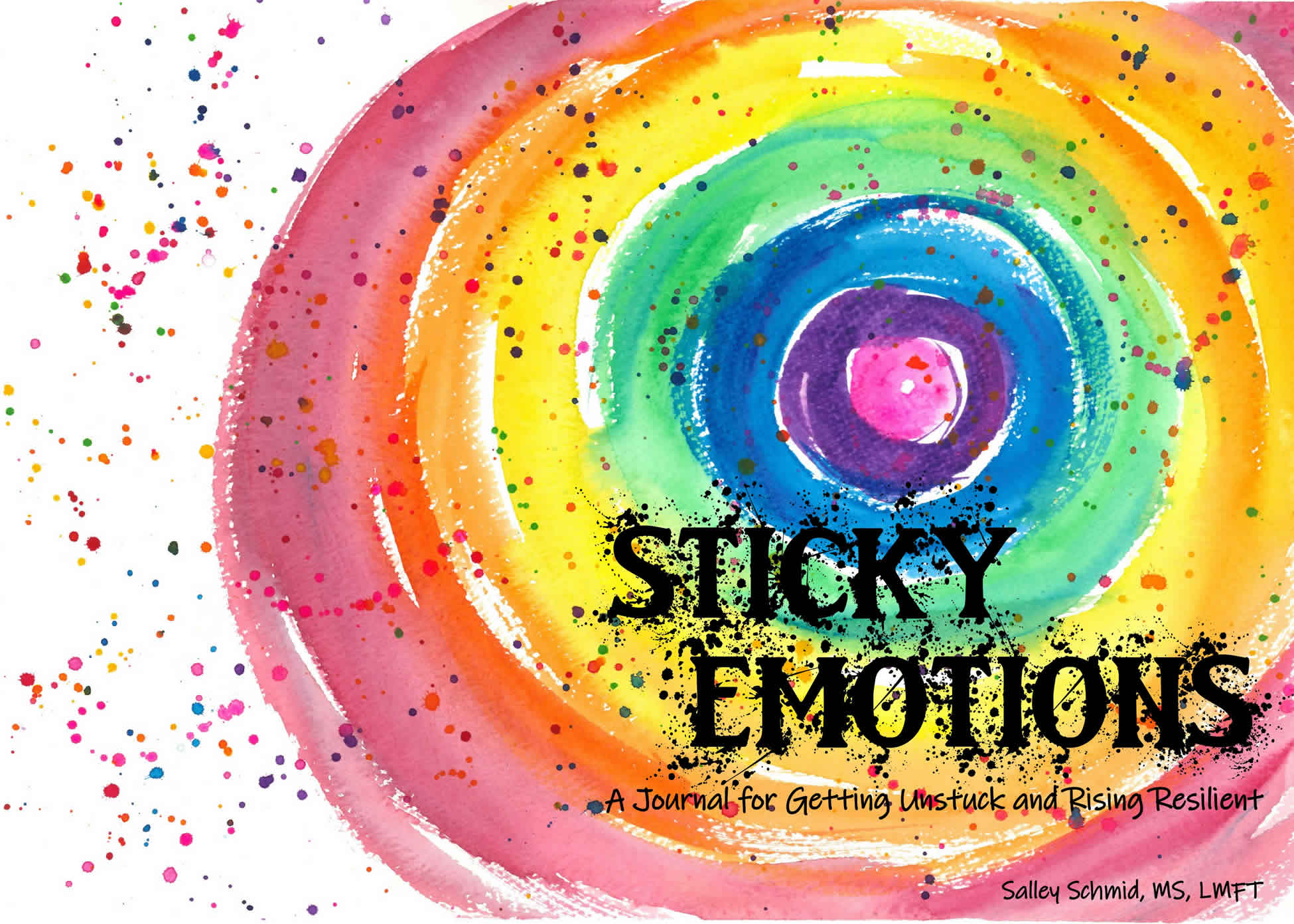Sticky Emotions Journal
Sticky Emotions: A Journal For Getting Unstuck and Rising Resilient is a tool for you to get your emotions and thoughts calmed down when they are running amuck. There are several tools in the journal to help you
Introduction:
You know those times your emotions get really sticky and uncomfortable? When your thoughts are on a rampage to destroy you and it feels like the world is both against you and caving in on you? Me too. Welcome to the human race. I work with people on a daily basis struggling with this as well. You see, I am a therapist. But first, I am a human. A human who, on a daily basis, encounters evidence of my humanness. My thoughts and emotions also run away with me. Not nearly as bad now as in the past, thankfully. However, I HAVE BEEN THERE. And, unfortunately, I occasionally revisit that place of self-inflicted terror. In all my years as a therapist (since 1996) and countless hours of training, I have cultivated some practices that I use personally and which I use to help my clients navigate their way through sticky emotions and thoughts to rise grounded, strong and resilient on the other side.
Now, you may take offense to the statement above about self-inflicted terror. I know! It most definitely does not feel self-inflicted, and it certainly does feel as real and dire as if you are in the direct path of an F5 Tornado. However, the storm of emotion and thought IS in your control and, actually, IT IS ONLY IN YOUR CONTROL. No one can MAKE you think or experience emotions without your consent, they can only influence your thoughts and emotions. You CAN manage that influence and maintain or re-gain control of your thoughts and emotions when feeling dysregulated (meaning flooded or overwhelmed with emotions and or thoughts) in response to an experience, situation or interaction. That is the purpose of this journal. It is a guide that begins with laying a foundation of self-definition and alignment with your core authentic self and values. This is followed by developing an understanding and awareness of how you allow the influence of others to lead to emotion and thought dysregulation. In working on this, we look at people pleasing and peace keeping tendencies and the way these tendencies serve as superfood for dysregulation, anxiety and depression. These two pieces serve as the foundation for this work. We refer back to them repeatedly in the other exercises in this journal so it is important that you take your time with these and not hurry through or skip them. It is hard work. You do hard things every day, so this IS something you CAN do. Carve out 20 to 30 minutes at a time to work on them and if it takes more than 2 to 4 sittings, it's ok. You are worth the investment of your time in your own wellbeing and healing work. I follow this foundational work by giving you two practices. These also are meant to be done thoughtfully and slowly. This is not a quick journal entry or process. It is a thoughtful, intentional reflective journal process that results in great freedom when time, effort and intention is given to the process. This is a process intended to help you self-regulate as you might with a therapist's help. Let's face it though, often when we most need a therapist, we can't get to one. We need tools that supplement the time between therapy sessions or after closing out with a therapist. This is not a replacement for therapy or a therapist by any means. It is however, a great supplement. Of the two tools I give you in this journal following the foundational work (the Wanted and Unwanted Identities and the Pleasing Focus processes), one process you can use to navigate vulnerability and the other process you can use to unpack the experience of feeling dysregulated. The processes will help guide you back to self-regulation, authenticity, courage, being present and grounded. There are multiple copies of these tools for you in the journal.
Just like you would have to schedule an appointment with a therapist (but you'd likely have to wait for days or weeks), when you find yourself in the midst of sticky emotions, schedule time (soon) with yourself to engage these guided journal processes. Remember it is not a quick process, so give yourself plenty of time. Allow breaks. During breaks drink cold water, take a brisk walk, do some yoga or stretching that involves crossing your midline horizontally or laterally. Once you have completed the process you chose to work on, take another break, following the same recommendations as above. Then re-read what you have written. From a place of courage, commit to following through on the action steps you identified in the journal process. Taking action can lead to feeling vulnerable and necessitates embracing courage. Make notes about how your follow through went. Share these journal process notes with your therapist, if you are working with one, to get even more help, clarification and forward momentum.
I sincerely hope this journal will be a valuable resource for you, opening doors to emotional freedom that are new and healing for you. Life can be harsh (or a great deal more than harsh) at times and will definitely throw its share of curve balls at us. I strongly encourage you to have a relationship with a therapist. Nothing can be as powerful as the in person support of a compassionate and objective listener in the form of a trained therapist. If you have trauma in your past, especially interpersonal trauma (harm done from a person or persons to you) then this work will feel all the more vulnerable. If you have trauma in your past or current life, the support of a therapist and the encouragement to use this journal as a supplement to therapy is even more relevant. This journal is designed with survivors of trauma specifically in mind. Even with that, the support of a therapist or a standing relationship with a therapist as a support to reach out to, can be very helpful and important as you embark on this vulnerable and courageous personal growth journey.



